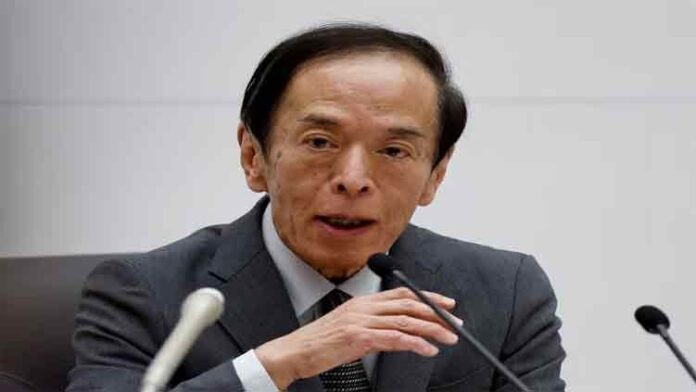The Bank of Japan (BOJ) has opted to maintain its ultra-loose monetary policy, emphasizing its cautious approach while awaiting further clarity on the trajectory of wages and inflation. The central bank’s decision, announced on Tuesday, indicates a preference for patience and a readiness to take additional easing measures if deemed necessary, as stated in its dovish policy guidance. As attention shifts to Governor Kazuo Ueda’s post-meeting briefing, markets are keenly watching for any indications regarding the potential timeline for ending the negative interest rate policy.
The BOJ’s two-day meeting concluded with the retention of the short-term rate target at -0.1% and the 10-year government bond yield around 0%. The loose upper band of 1.0% for the 10-year yield also remained unchanged. The central bank, acknowledging the “extremely high uncertainties” surrounding Japan’s economy and prices, opted for stability in its policy stance.
Governor Ueda’s post-meeting news conference, scheduled for 3:30 pm (0630 GMT), is expected to provide insights into the central bank’s decision-making process and shed light on potential shifts in policy in the coming months.
Japan has experienced inflation consistently above 2% for over a year, with some companies signaling a willingness to continue raising wages. This has fueled speculation about a possible shift in monetary policy in the near term. In July, the BOJ adjusted its approach to long-term borrowing costs by raising the cap set for the 10-year bond yield. The subsequent adjustment in October signaled a gradual move away from the radical stimulus implemented by the previous leadership.
Analysts have been closely monitoring the central bank’s actions, with over 80% of economists polled by Reuters in November expecting the BOJ to end its negative rate policy next year. Many anticipate April as the most likely timing for this shift, while some suggest the possibility of a move in January. The BOJ’s quarterly outlook report, released in months like January and April, may provide an opportune moment for adjustments, offering fresh growth and price projections.
However, the global monetary policy landscape, marked by indications from US and European central banks that they have concluded rate hikes, adds complexity to the BOJ’s decision. A potential rate increase by the BOJ, while other central banks are cutting rates, could lead to a yen spike, impacting the profits of major manufacturers and potentially hindering wage hikes.
Political considerations further complicate the BOJ’s policy trajectory, with persistent inflation affecting Prime Minister Fumio Kishida’s approval ratings. As the central bank navigates these challenges, its commitment to a cautious and data-driven approach remains evident.


